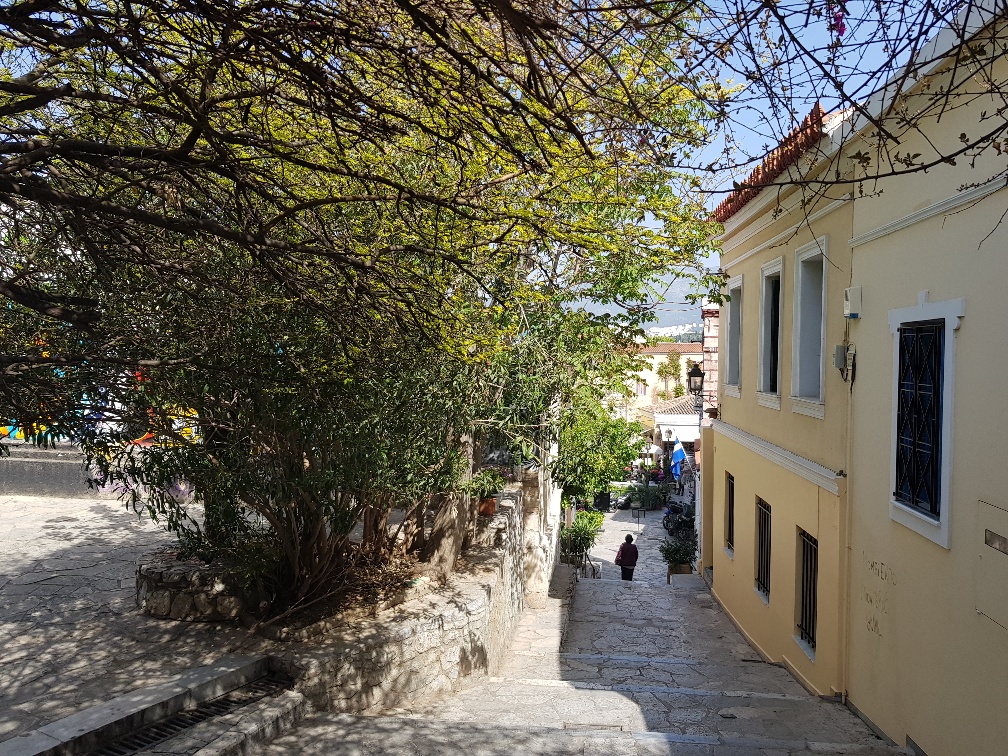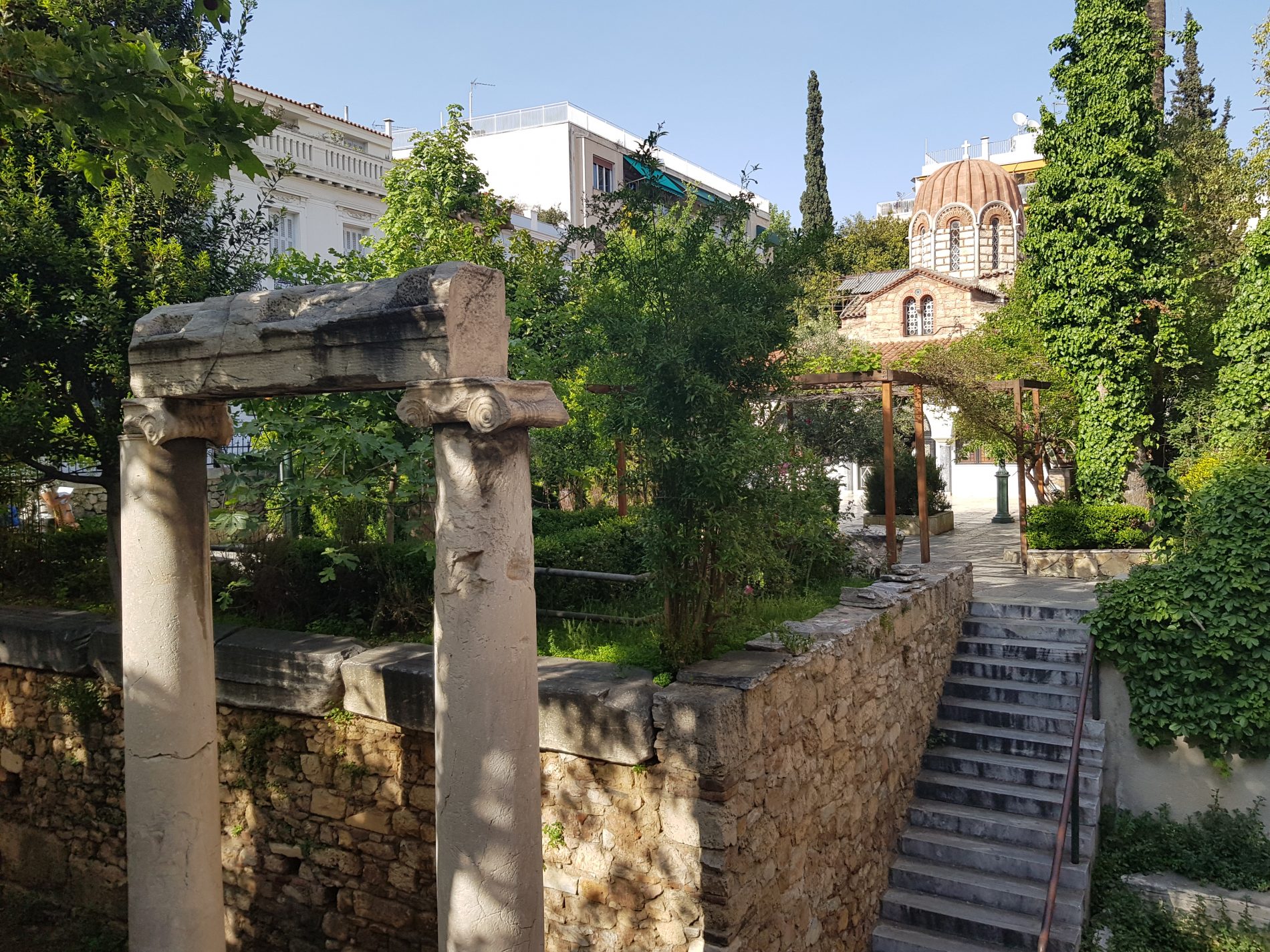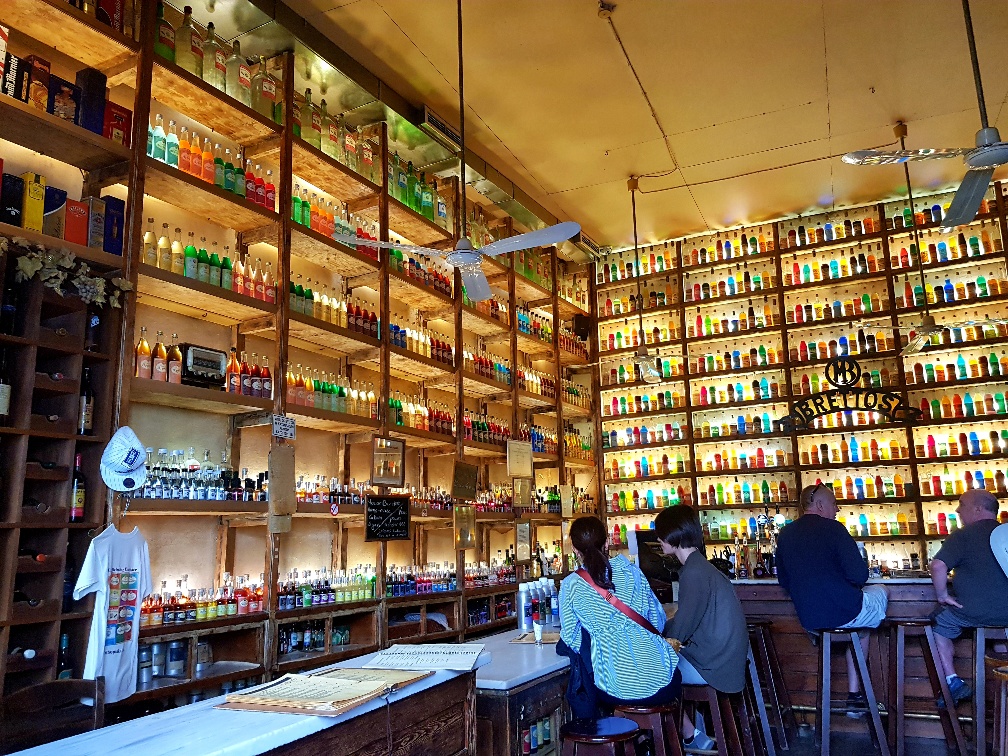Fast wie eine Reise durch die Vergangenheit wirkt ein Spaziergang durch Athens schönsten Stadtteil, der zudem zu einer der beliebtesten touristischen Einkaufsmeilen mutiert ist. Wer sich aber von den Menschenmengen nicht abschrecken lässt, der wird in Plaka viel zu sehen bekommen.
Von HB-Redakteurin Nadja Becker
Athen – Die kopfsteingepflasterten Gassen ziehen sich wie durch ein kleines Labyrinth. Überall finden sich Tavernen, Cafés, Bars oder kleine Geschäfte mit griechischen Produkten. Am Wochenende ist kaum ein Durchkommen in Plaka, einem der teuersten Stadtteile von Athen. Dafür gibt es allerdings viel zu sehen. Hier lässt sich nicht nur nach Herzenslust stöbern, denn viele der Grundmauern gehen auf die Antike zurück.
Bis Mitte der sechziger Jahre standen in diesem Bereich viele Häuser leer, viele der Einwohner waren in die moderneren Stadtteile gezogen. Dann entdeckte die Gastronomie das Viertel im Schatten der Akropolis. Ende der siebziger Jahre öffneten die ersten Geschäfte, bis Mitte der achtziger Jahre hatte sich das Stadtviertel zu einem der begehrtesten in Athen gemausert. Mode, Schmuck, lokale Keramikwaren und griechische Spezialitäten unterstützen das Flair einer dörflichen Atmosphäre. Bis spät in die Nacht hat hier vieles geöffnet.

Woher der Name Plaka stammt, darüber streiten sich die Historiker. Der heutige Name war vor dem griechischen Unabhängigkeitskrieg nicht gebräuchlich. Es ist davon auszugehen, dass er auf verschiedene Wurzeln zurückzuführen ist – auf die arvanitische Bezeichnung Pilar Athenas (altes Athen), Plaka als Platte mit Bezug auf einen zentralen Punkt innerhalb der Stadt oder auf eine namengebende Familie.
Zumeist stammen die Fassaden aus dem 18. Jahrhundert, die Grundmauern häufig aus der Antike. Bis in das frühe 19. Jahrhundert galt Plaka als der Kern der Stadt Athen, erst danach wandelte sich der Bereich zum Touristenviertel, heute reichen die Immobilienpreise an die teuersten Athener Stadtteile heran.

In Plaka treffen Flanierende zudem auf das Lysikratesmonument, auch als Laterne des Diogenes bekannt, welches in der 2. Hälfte des 4. Jahrhunderts vor Christus errichtet wurde. Das Denkmal erinnert an den Sieg des Choregos Lysikrates im Jahr 335/334 vor Christus gegen einen Knabenchor während der Festspiele zu Ehren des Dionysos. Ebenso zieht der Turm der Winde am Rande der römischen Agora die Blicke auf sich. Dieses hervorragend erhaltene Bauwerk wurde in späthellenistischer Zeit erbaut und diente als Uhrenpavillon mit Wetterstation. Der achteckige, 13 m hohe Turm wurde im 1. Jahrhundert vor Christus von dem Astronomen Andronikos von Kyrrhos geplant.
Für eine Pause empfiehlt sich die älteste Destillerie Athens und die zweitälteste in Europa. Beheimatet ist die Brettos Distillery in einem 200 Jahre alten Gebäude an der Straße Kydathineon 41. Gegründet 1909 von Michael Brettos machen heute hunderte farbiger Flaschen an den Wänden den Aufenthalt zu einem Erlebnis. Brettos ist bekannt für den hauseigenen Ouzo, Brandy und verschiedenen Spirituosen, hergestellt nach traditionellen Rezepten von Smyrni, darunter Masticha oder Pfefferminz. Vom 10.00 Uhr bis 3 Uhr nachts stehen hier traditionelle griechische Spirituosen und über 30 Besonderheiten zum Probieren bereit (brettosplaka.com). (nb)

Athens: Plaka – Enjoyment in the Shadow of the Acropolis
Almost like a journey through the past, a walk through Athens’ most beautiful neighborhood feels timeless, though today it has also become one of the city’s most popular tourist shopping districts. Those who are not discouraged by the crowds will discover plenty to see in Plaka.
The cobblestone alleys form a charming labyrinth. Everywhere you turn, there are tavernas, cafés, bars, or small shops offering Greek products. On weekends, it can be difficult to make your way through Plaka, one of the most expensive districts of Athens, but the sights make it worthwhile. Here, visitors can not only shop to their heart’s content but also encounter foundations that date back to antiquity.
Until the mid-1960s, many houses in this area stood empty, as residents moved to more modern districts. Then, restaurants and cafés rediscovered the charm of this neighborhood beneath the Acropolis. By the late 1970s, the first shops opened, and by the mid-1980s, Plaka had become one of Athens’ most desirable quarters. Fashion, jewelry, local ceramics, and Greek specialties contribute to its unique village-like atmosphere. Many establishments stay open late into the night.
The origin of the name Plaka is debated among historians. The name was not in use before the Greek War of Independence. It may derive from the Arvanitic expression Pilar Athens (Old Athens), from plaka meaning „plate“ (referring to a central square), or possibly from a family name.
Most façades date back to the 18th century, while many foundations are of ancient origin. Until the early 19th century, Plaka was considered the heart of Athens; only later did it transform into a tourist district. Today, real estate prices in Plaka rival those of the city’s most expensive areas.
Among Plaka’s highlights is the Lysicrates Monument, also known as the “Lantern of Diogenes,” built in the second half of the 4th century BC. It commemorates the victory of choregos Lysicrates in 335/334 BC against a boys’ choir during the Dionysian festivals. Also impressive is the Tower of the Winds, located at the edge of the Roman Agora. This well-preserved octagonal tower, 13 meters tall, was built in the late Hellenistic period and served as both a clock tower and weather station. It was designed in the 1st century BC by the astronomer Andronikos of Kyrrhos.
For a break, visitors should stop at Brettos Distillery, the oldest distillery in Athens and the second-oldest in Europe. Located in a 200-year-old building at Kydathineon 41, it was founded in 1909 by Michael Brettos. Today, hundreds of colorful bottles line the walls, creating a unique atmosphere. Brettos is famous for its own ouzo, brandy, and various spirits, made according to traditional recipes from Smyrna, including mastiha and peppermint. From 10 a.m. until 3 a.m., visitors can taste traditional Greek spirits and over 30 specialties (brettosplaka.com).
Αθήνα: Πλάκα – Απόλαυση στη σκιά της Ακρόπολης
Ένας περίπατος στην Πλάκα, την ομορφότερη γειτονιά της Αθήνας, μοιάζει σχεδόν με ταξίδι στο παρελθόν, αν και σήμερα έχει μετατραπεί σε έναν από τους πιο δημοφιλείς τουριστικούς εμπορικούς δρόμους της πόλης. Όσοι δεν αποθαρρύνονται από τα πλήθη θα βρουν εδώ πολλά να δουν.
Τα λιθόστρωτα δρομάκια σχηματίζουν ένα μικρό λαβύρινθο. Παντού υπάρχουν ταβέρνες, καφέ, μπαρ και μικρά καταστήματα με ελληνικά προϊόντα. Τα Σαββατοκύριακα η Πλάκα γεμίζει κόσμο και η διέλευση γίνεται δύσκολη· όμως η γειτονιά, μία από τις ακριβότερες της Αθήνας, προσφέρει πολλά αξιοθέατα. Εδώ κανείς μπορεί όχι μόνο να ψωνίσει, αλλά και να ανακαλύψει θεμέλια που χρονολογούνται από την αρχαιότητα.
Μέχρι τα μέσα της δεκαετίας του ’60, πολλές κατοικίες ήταν άδειες, καθώς οι κάτοικοι είχαν μετακομίσει σε πιο σύγχρονες περιοχές. Στη συνέχεια η γαστρονομία ανακάλυψε εκ νέου τη γειτονιά στη σκιά της Ακρόπολης. Στα τέλη της δεκαετίας του ’70 άνοιξαν τα πρώτα καταστήματα και μέχρι τα μέσα της δεκαετίας του ’80 η Πλάκα είχε εξελιχθεί σε μια από τις πιο περιζήτητες περιοχές της Αθήνας. Μόδα, κοσμήματα, τοπικά κεραμικά και ελληνικές λιχουδιές συνθέτουν μια ατμόσφαιρα χωριού. Πολλά καταστήματα παραμένουν ανοιχτά μέχρι αργά τη νύχτα.
Η προέλευση του ονόματος Πλάκα συζητείται από τους ιστορικούς. Δεν ήταν σε χρήση πριν τον ελληνικό πόλεμο της ανεξαρτησίας. Πιθανόν προέρχεται από την αρβανίτικη έκφραση Pilar Athens (παλαιά Αθήνα), από τη λέξη πλάκα ως «πλάκα/πλατεία» που υποδηλώνει κεντρικό σημείο, ή από οικογενειακό όνομα.
Οι περισσότερες προσόψεις χρονολογούνται στον 18ο αιώνα, ενώ τα θεμέλια είναι συχνά αρχαία. Μέχρι τις αρχές του 19ου αιώνα η Πλάκα θεωρούνταν ο πυρήνας της Αθήνας· μόνο αργότερα μετατράπηκε σε τουριστική συνοικία. Σήμερα οι τιμές ακινήτων φτάνουν αυτές των ακριβότερων περιοχών της πόλης.
Στην Πλάκα συναντά κανείς το Μνημείο του Λυσικράτη, γνωστό και ως «Φανάρι του Διογένη», το οποίο χτίστηκε στο δεύτερο μισό του 4ου αιώνα π.Χ. και θυμίζει τη νίκη του χορηγού Λυσικράτη το 335/334 π.Χ. σε αγώνα παιδικού χορωδιακού θιάσου στα Διονύσια. Εντυπωσιακός είναι και ο Πύργος των Ανέμων, στα όρια της Ρωμαϊκής Αγοράς. Το οκταγωνικό αυτό οικοδόμημα, ύψους 13 μέτρων, χτίστηκε στην ύστερη ελληνιστική περίοδο και χρησίμευε ως ρολόι και μετεωρολογικός σταθμός. Σχεδιάστηκε τον 1ο αιώνα π.Χ. από τον αστρονόμο Ανδρόνικο τον Κυρρήστου.
Για ένα διάλειμμα αξίζει μια στάση στο οινοπνευματοποιείο Brettos, το παλαιότερο της Αθήνας και το δεύτερο παλαιότερο στην Ευρώπη. Στεγάζεται σε ένα κτίριο 200 ετών στην οδό Κυδαθηναίων 41. Ιδρύθηκε το 1909 από τον Μιχαήλ Μπρέττο. Σήμερα εκατοντάδες πολύχρωμα μπουκάλια κοσμούν τους τοίχους και δημιουργούν μοναδική ατμόσφαιρα. Το Brettos είναι γνωστό για το ούζο, το μπράντι και τα διάφορα αποστάγματα που παράγονται με παραδοσιακές συνταγές της Σμύρνης, όπως μαστίχα ή μέντα. Από τις 10:00 το πρωί έως τις 3:00 τα ξημερώματα, οι επισκέπτες μπορούν να δοκιμάσουν ελληνικά αποστάγματα και πάνω από 30 ιδιαίτερες ποικιλίες (brettosplaka.com).
